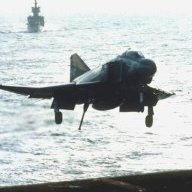Well, I'm still looking; searching the history of these Black Cats is a bit like opening a tin of worms. The 42 Squadron log has no mention of A24-101 after May, 21st., 1945, but the AWM has photos of it as part of a 42 Squadron detachment working with the USN Air Base at Leyte in the Phillipines, dated 10 days before it was damaged. They say the detachment was on mine laying & courier duties: http://cas.awm.gov.au/item/OG3094
Starting to piece together a bit of it's 42 Squadron history, many thanks to Siznaudin for posting A24-101's record cards & a link to the 42 Squadron operations log.
Here's a rough story of it's sixteenth mission with 42 Squadron:
In January of 1945, 42 Squadron's Catalina's mined the approaches to Surabaya in Eastern Java. Based at Melville Bay & operating from East Arm, Darwin, they had to re-fuel at West Bay RAAF Marine Section, near Truscott Air Base on the West Australian Kimberley Coast, in order to extend their range. Five aircraft took part in the mission, with A24-101 assigned the position as Duty 1. The others were A24/88, A24/93, A24/96 & A24/97.
A24-101 was skippered by Squadron Leader Ken Grant, who often assumed tempory command of the squadron in the absence of the usual commander, Wing Commander John Costello. Two second pilots were on board, Wing Comander Ian Allen, AFC, and F/O Falstein. Other crew members present were F/O Brandon (navigator), Warrant Officer Skett (wireless operator/air gunner), F/Sgt. Beer (W.O./Air), Sgts. O'Mara & Murrell (flight engineers), Sgt. Sainsbuy (fitter 11A) and Sgt. Priestley (Armourer).
Departure time from East Arm, Darwin was 9.40 pm on Monday, eighth of January, 1945, for the three hour flight to West Bay, arriving at 12.40 am on the ninth. After re-fuelling, they left West Bay at 4.55 am for the flight to East Java of almost nine hours, arriving over the target at 1.59 pm. The only enemy resistance was a single shot fired from a ship near the breakwater at Surabaya. During the mission, observations were recorded and propaganda leaflets dropped over Lombok and Sumbawa. Arrival time back at West Bay was 10.45 pm, after a flight of 17 hours, 50 minutes. A fifteen minute fuel stop saw them leaving again at 11pm and arriving back in Darwin at 1.40am on Wednesday, the tenth of January. Total flying time for the mission was twenty three and a half hours.
[ATTACH=full]947[/ATTACH]
There's a Wiki page on the Truscott Air Base, near the site of the old West Bay Marine Section. http://en.wikipedia.org/wiki/Mungalalu_Truscott_Airbase
Apparently it's re-opened & used as an air base for off-shore rigs. Its interesting to see on their page, a photo of a Grumman Mallard flying boat used to service the pearl farms. They say they own 3 of them, all with turbo prop conversions.
Cheers, Willie.
[ATTACH]18083[/ATTACH]



